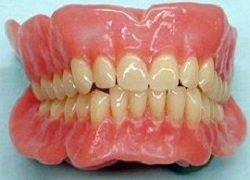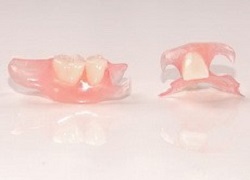
Dental prosthetics is a special branch of dentistry that deals with the diagnosis and treatment of dental system dysfunctions.
Dental orthopedics is not just a method of restoring healthy teeth, it helps maintain the overall health of the body, which can be affected in case of loss of dental units. But also maintaining and restoring facial aesthetics and smile, which contributes to better integration into society and improving the quality of life.
The basis of orthopedic dentistry is dental restoration and dental prosthetics (of lost dental units). In the restoration process, biocompatible materials are used that allow the correction of the dental crown (the part of the tooth that we see in the mouth) and the restoration of the initial dental function and morphology.
In dental prosthetics there are three types of prosthesis (or replacement of lost dental units): mobile prosthesis, conditionally mobilizable prostheses, fixed prostheses (crowns or dental bridges).
Mobile prostheses are usually the only solution for total edentulousness (lack of all teeth on one jaw or both) and are represented by acrylic prostheses or elastic polymers (flexible prostheses).

Conditionally mobilizable prostheses, used in case of loss of one or several teeth (butterfly or flap).



Dental veneers - indicated for minor dental defects (superficial caries, intrinsically caused dental dyschromia, severe dental fluorosis, tremors and diastemas) located in the aesthetic area of the smile. They are made of high quality ceramics and most faithfully restore the naturalness of the tooth, and the amount of dental substance that needs to be removed is minimal and thus preserves the vitality of the tooth (no need to remove the nerve).
An absolutely new trend in modern dentistry is non-prep veneers or lumineers - dental veneers that do not require grinding the tooth.
Dental crowns - are indicated in case of massive destruction of the tooth, when there is no indication of restoration with adhesive materials of the tooth, or the remaining dental walls are so weak that they risk fracture, but there is no indication of tooth extraction. Once cemented, the dental crowns restore the continuity of the dental arch and can only be removed by special intervention. Dental crowns can be metallic, metal-ceramic, all-ceramic, zirconium, zirconium-ceramic.